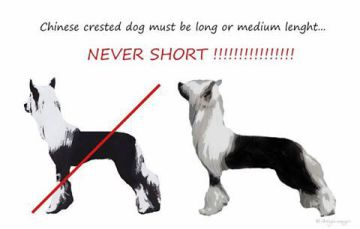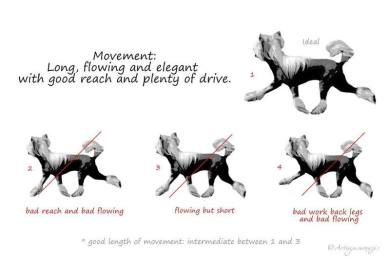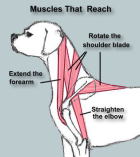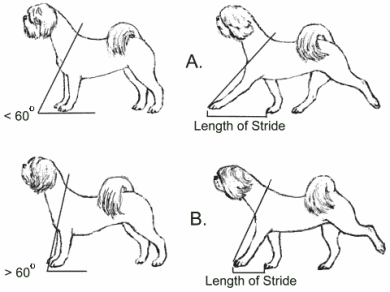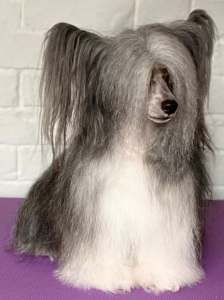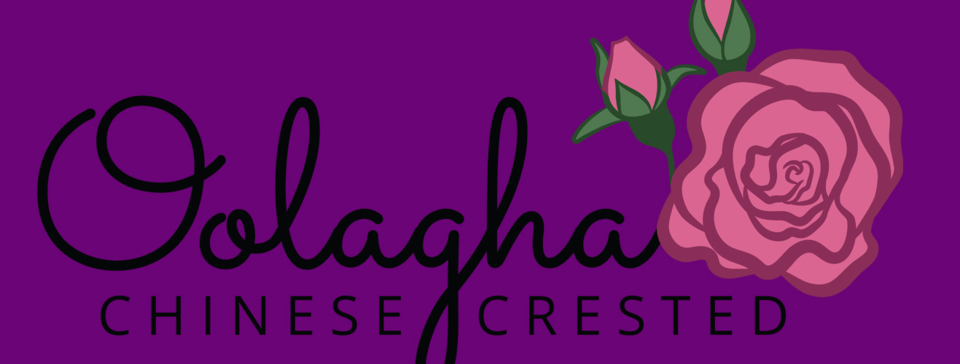
The Breed
The Kennel Club Breed Standard
(Courtesy of UK KC)
Breed Standard Last updated June 2019
A Breed Standard is the guideline which describes the ideal characteristics, temperament and appearance including the correct colour of a breed and ensures that the breed is fit for function. Absolute soundness is essential. Breeders and judges should at all times be careful to avoid obvious conditions or exaggerations which would be detrimental in any way to the health, welfare or soundness of this breed. From time to time certain conditions or exaggerations may be considered to have the potential to affect dogs in some breeds adversely, and judges and breeders are requested to refer to the Breed Watch section of the Kennel Club website here http://www.the-kennel-club.org.uk/services/public/breeds/watch for details of any such current issues. If a feature or quality is desirable it should only be present in the right measure. However if a dog possesses a feature, characteristic or colour described as undesirable or highly undesirable it is strongly recommended that it should not be rewarded in the show ring.
General Appearance A small, active and graceful dog; medium- to fine-boned, smooth hairless body, with hair on feet, head and tail only; or covered with a soft veil of hair.
Characteristics Two distinct types of this breed; Deer type, racy and fine boned, and Cobby type, heavier in body and bone. Temperament Happy, never vicious.
Head and Skull Slightly rounded and elongated skull. Cheeks cleanly chiselled, lean and flat, tapering into muzzle. Stop slightly pronounced but not extreme. Head smooth, without excess wrinkles. Distance from base of skull to stop equal to distance from stop to tip of nose. Muzzle tapering slightly but never pointed, lean without flews. Nose a prominent feature, narrow in keeping with muzzle. Any colour nose acceptable. Head presenting graceful appearance, with alert expression. Lips tight and thin. An ideal crest begins at the stop and tapers off down neck. Long and flowing crest preferred, but sparse acceptable.
Eyes So dark as to appear black. Little or no white showing. Medium size, almond in shape. Set wide apart.
Ears Set low: highest point of base of ear level with outside corner of eye. Large and erect, with or without fringe, except in Powder Puffs where drop ears are permissible.
Mouth Jaws strong, with perfect, regular scissor bite, i.e. upper teeth closely overlapping lower teeth and set square to the jaws. The hairless variety will have the primitive trait of forward pointing canines and should not be penalised for absence of full dentition.
Neck Lean, free from throatiness, long and sloping gracefully into strong shoulders. When moving, carried high and slightly arched.
Forequarters Shoulders clean, narrow and well laid back. Legs long and slender, set well under body. Elbows held close to body. Pasterns fine, strong, nearly vertical. Toes turned neither in nor out.
Body Medium to long. Supple. Chest rather broad and deep, not barrel-ribbed. Breast bone not prominent. Brisket extending to elbows; moderate tuck-up.
Hindquarters Rump well rounded and muscular, loins taut, stifles firm and long, sweeping smoothly into the well let down hocks. Angulation of the rear limbs must be such as to produce a level back. Hind legs set wide apart.
Feet Extended hare-foot, narrow and long. Nails any colour, moderately long. Socks ideally confined to toes, but not extending above top of pastern. Feet turning neither in nor out.
Tail Set high, carried up or out when in motion. Long and tapering, fairly straight, not curled or twisted to either side, falling naturally when at rest. Plume long and flowing, confined to lower two-thirds of tail. Sparse plume acceptable.
Gait/Movement Long, flowing and elegant with good reach and plenty of drive.
Coat No large patches of hair anywhere on body. Skin fine-grained, smooth, warm to the touch. In Powder Puffs coat consists of an undercoat with soft veil of long hair, veil coat a feature.
Colour Any colour or combination of colours.
Size Ideal height in dogs: 28-33 cms (11-13 ins) at withers; bitches: 23-30 cms (9-12 ins) at withers. Weight varies considerably, but should not be over 5.4 kgs (12 lbs).
Faults Any departure from the foregoing points should be considered a fault and the seriousness with which the fault should be regarded should be in exact proportion to its degree and its effect upon the health and welfare of the dog.
Note Male animals should have two apparently normal testicles fully descended into the scrotum.
The breed standard is the guidelines the KC ask their judges to follow when judging the Chinese Crested. It is, of course, open to interpretation by each individual judge and also by each individual breeder when considering a stud dog for a future breeding. It is however, a standard set by the KC for each dog being shown and should be adhered to by both judges and breeders.
The Chinese Crested is a small agile dog, with fine bone, happy to languish on the sofa or equally to run around a field at great speed. It is not a breed that everyone appreciates, especially the hairless who are often not acceptable to pet owners.
Nearly all the hairless grow a certain amount of body hair, some more than others, and for showing purposes this is removed. There are, today, very few true hairless in the breed - the trend being to have glamour in the dogs being shown and therefore more furnishings on the socks and crest - sadly true hairless are few and far between.
There are unfortunately several health issues with the breed, Primary Lens Luxation (PLL), Progressive Retinal Atrophy (PRA), Glaucoma, plus the less detectable issues of slipping patellas, Perthes Disease and lately there seems to be a rise in dogs suffering from fits or epilepsy. Anyone considering purchasing a Crested should make sure they purchase from a reputable breeder who has tested their stock and is producing healthy puppies.
The powder puff variety requires regular grooming to keep the coat in good condition. The coat should not be a thick bushy coat, it should be a fine silky coat with a long veil. A correct veil coat is also not easy to find these days - I was always taught that if a dog has a correct veil coat the full outline of the body and legs should be seen when the dog stands in sunlight. All too often this is not the case, I am proud to say that all my current show dogs have correct veil coat.
The Chinese Crested do not always make good pets as they do, like most of the toy breeds, tend not to be clean in the house so they are not a suitable breed for families with small children. They are, however, a charming fun loving breed and will give you many hours of pleasure and companionship - mine certainly have!!
Beyond the standard
SHOULDERS
Why do some dogs have a long smooth stride and others have a choppy gait with little front reach? The answer is found in the shoulder. The front assemby of the dog is not attached in the same way as the human, dogs have no collar bone the front assembly floats on its muscular and ligamentous attachements and this provides cushioning and flexibility.
ANGULATION
The bones fold at angles to one another and this provides a lever upon which the muscles can work. A well angulated shoulder is about 30 degrees (to the vertical) and when you add the 15 degrees it can rotate from the static position a maximum of 45 degrees extention is achieved.
Dogs with upright shoulders cannot move as well as dogs with correctly placed angulated shoulders.
DOG A - will move easily with a long flowing gait - holding his head at a 90 degree angle to the axis of his shoulder blades. He will have a long stride and good movement
DOG B - Because of his upright shoulder is unable to extend his front legs correctly he will also lower his head to gain effective use of the muscles which move the leg forward. Because of this head lowering he will also tend to kick up behind rather than his back legs going correctly under him.
